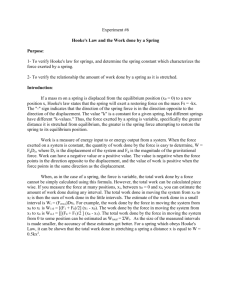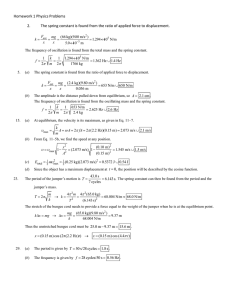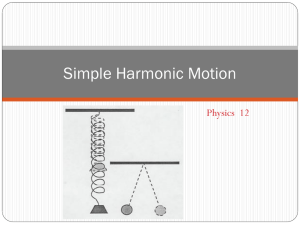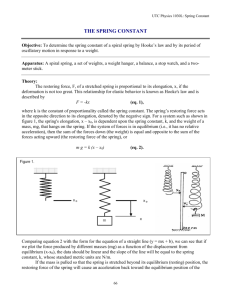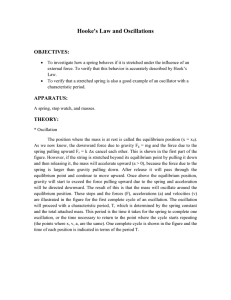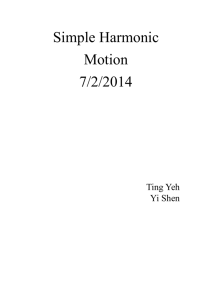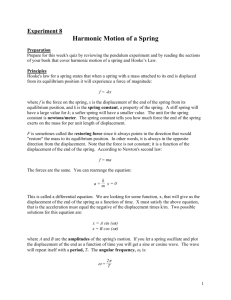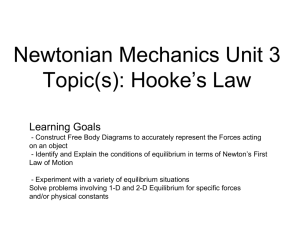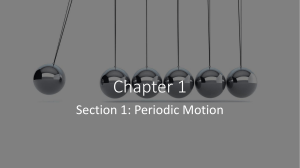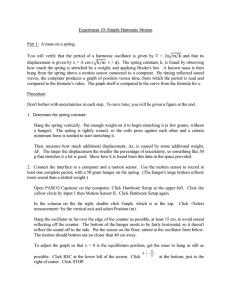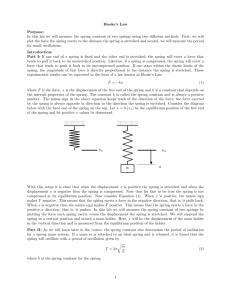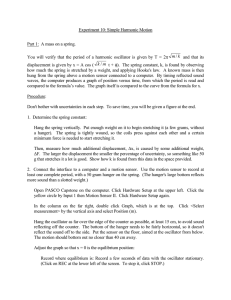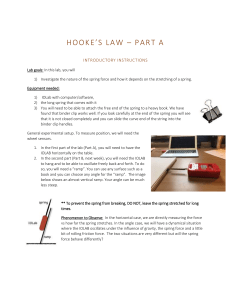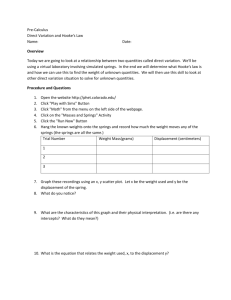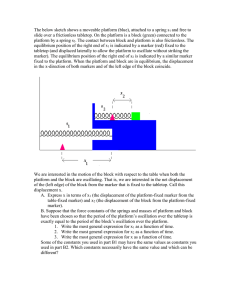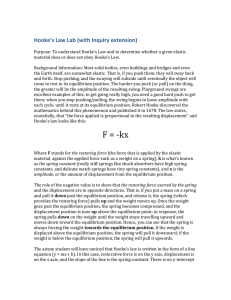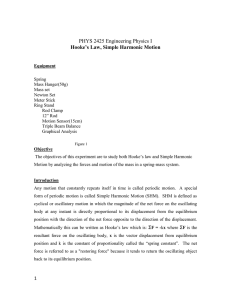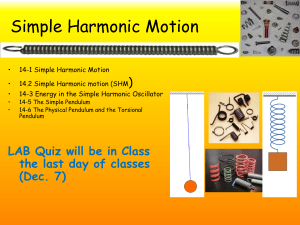Simple Harmonic Motion Lab
advertisement
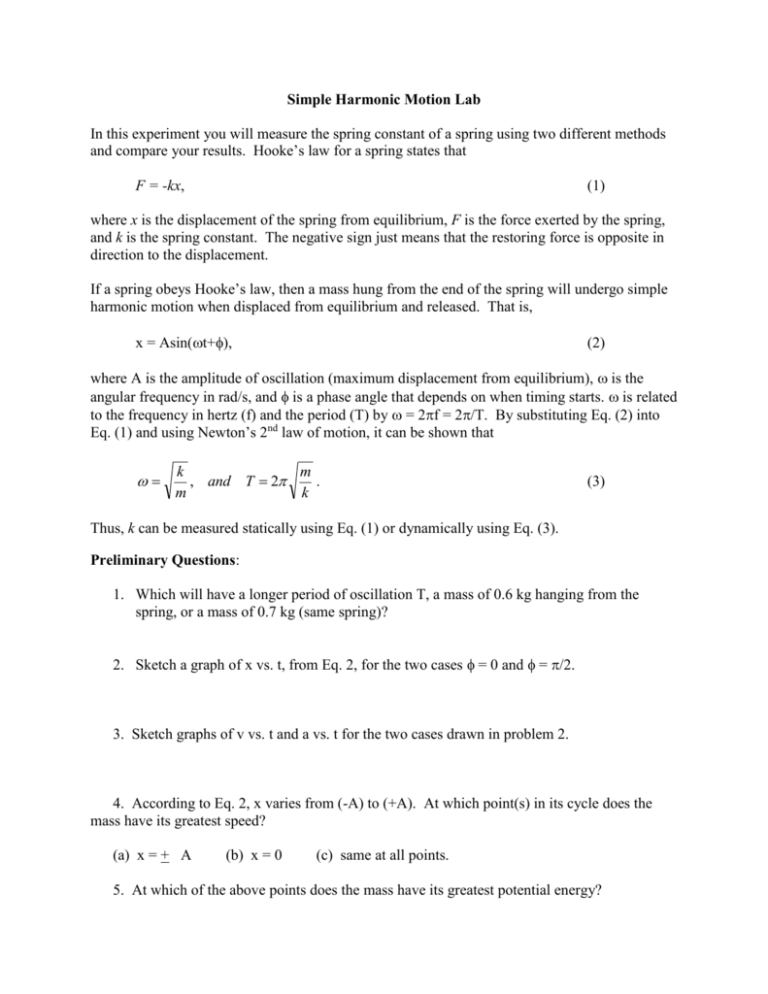
Simple Harmonic Motion Lab In this experiment you will measure the spring constant of a spring using two different methods and compare your results. Hooke’s law for a spring states that F = -kx, (1) where x is the displacement of the spring from equilibrium, F is the force exerted by the spring, and k is the spring constant. The negative sign just means that the restoring force is opposite in direction to the displacement. If a spring obeys Hooke’s law, then a mass hung from the end of the spring will undergo simple harmonic motion when displaced from equilibrium and released. That is, x = Asin(t+), (2) where A is the amplitude of oscillation (maximum displacement from equilibrium), is the angular frequency in rad/s, and is a phase angle that depends on when timing starts. is related to the frequency in hertz (f) and the period (T) by = 2f = 2/T. By substituting Eq. (2) into Eq. (1) and using Newton’s 2nd law of motion, it can be shown that k m . , and T 2 m k (3) Thus, k can be measured statically using Eq. (1) or dynamically using Eq. (3). Preliminary Questions: 1. Which will have a longer period of oscillation T, a mass of 0.6 kg hanging from the spring, or a mass of 0.7 kg (same spring)? 2. Sketch a graph of x vs. t, from Eq. 2, for the two cases = 0 and = /2. 3. Sketch graphs of v vs. t and a vs. t for the two cases drawn in problem 2. 4. According to Eq. 2, x varies from (-A) to (+A). At which point(s) in its cycle does the mass have its greatest speed? (a) x = + A (b) x = 0 (c) same at all points. 5. At which of the above points does the mass have its greatest potential energy? Procedure 1. Hang a mass holder from the end of the spring and measure the displacement from this position for added masses m = 0.1 kg, 0.2 kg, … , 0.5 kg (or 5 values of m appropriate to your spring). Plot F (= mg) versus x and determine k from the slope of the line. Submit your graph with your report. 2. Hang the spring and mass holder from the force sensor. Connect the force sensor to the Pasco interface and set up Data Studio so that you can graph force as a function of time. Set the sample rate of the force sensor to 50 Hz. Beginning with m = 0.1 kg, displace the mass from equilibrium and measure force versus time. Fit the data to a sine wave and determine the period T from your fit parameters. Repeat for m = 0.2 kg, … , 0.5 kg. Now plot T2 versus m and determine the slope of the line. Be sure to include the mass of the mass holder. Use the slope to determine k. Submit a sample fit to the sine wave, your table of values for T and m, and your graph of T2 vs. m with your report. Questions 1. Compare the values of k determined in parts 1 and 2. Are they in good agreement? 2. If we did this experiment on the moon (where g = 1.6 m/s2), what effect, if anything, would this have on the two parts of this experiment? Explain. 3. What is the meaning of the intercept in your straight line fit in part 2? (Hint: See problem 68 in Chapter 15.)
